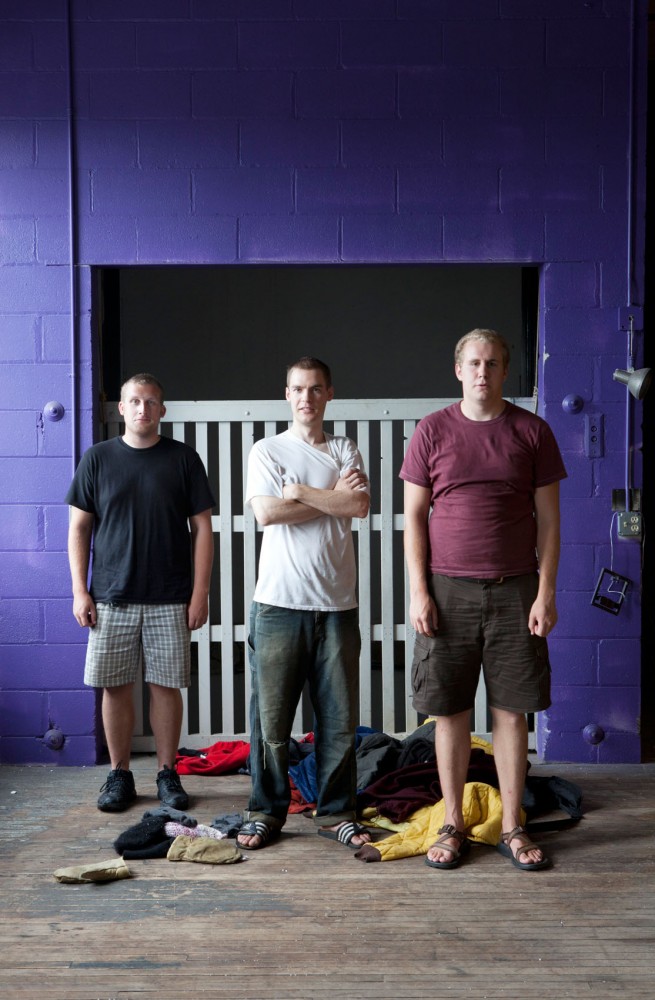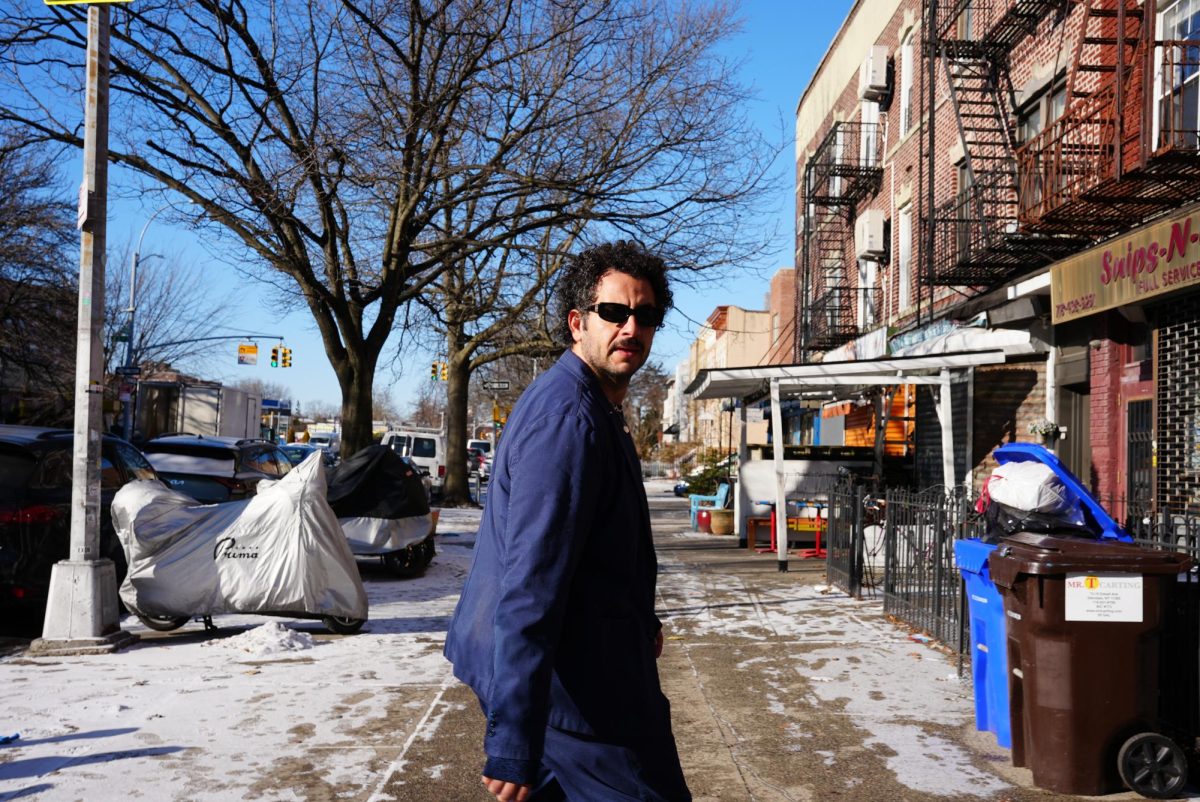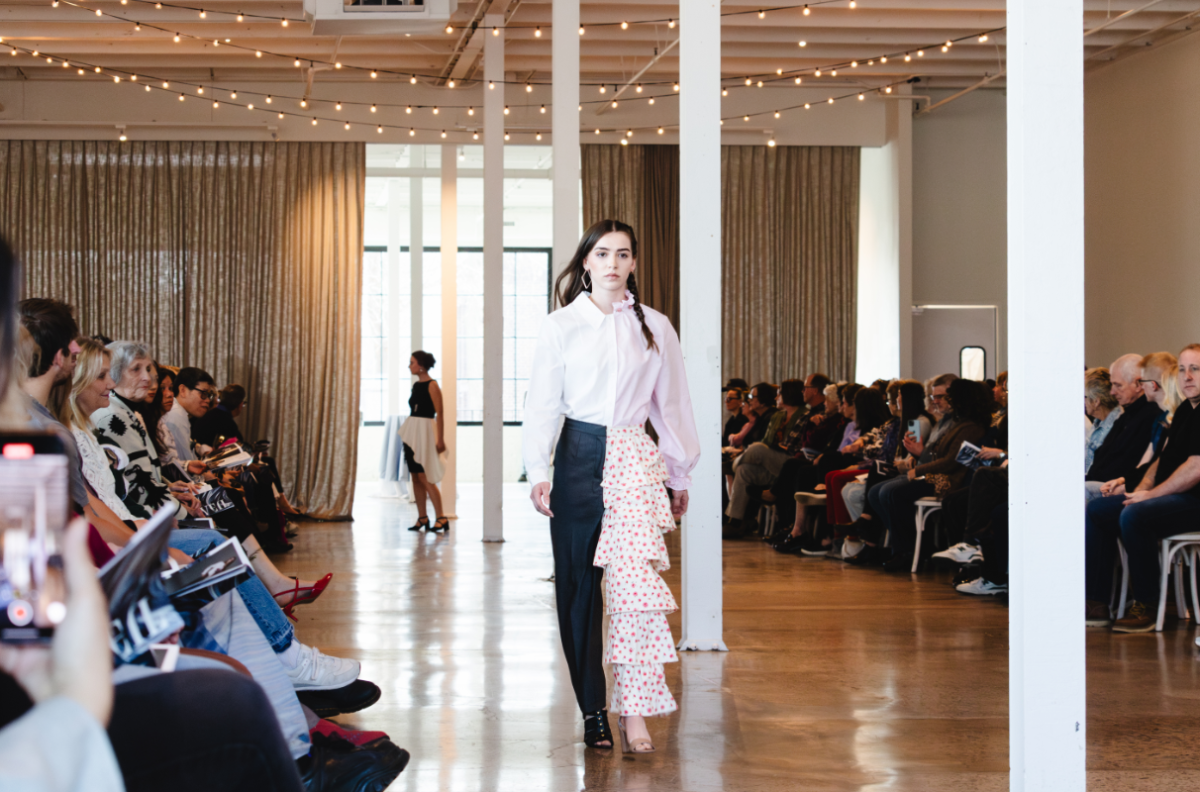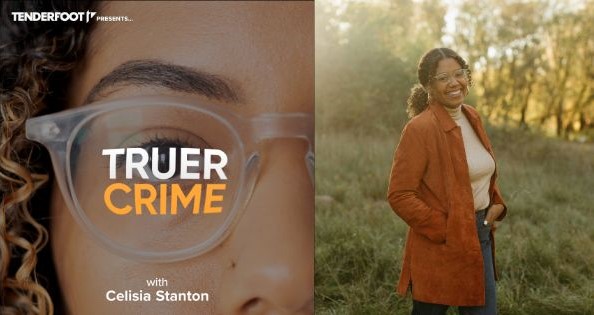Imagine that you’re at a restaurant with a hot date. It’s your first date, and you’re very nervous, so you have a friend hiding in the bushes, telling you what to say through a secret earpiece. It’s a classic sitcom set-up — but imagine that your date has an earpiece too, and you’re both acting out the date based on instructions.
This is the basic idea behind Autotheatre. It’s an experimental performance style that has piqued the interest of local theater troupe Myndwyrm (pronounced “mind worm”). The seven University of Minnesota alumni behind Myndwrym are planning a West Coast tour that will explore the Autotheatre form.
In Myndwrym’s Autotheatre pieces, all of the audience members are also performers. They wear headphones and listen to recorded instructions created by the members of Myndwyrm. They perform a scene together, or go on a walking tour of the city, or gather for a picnic.
Myndwyrm started with simple pieces that placed two audience members at a table with props. Both participants would receive instructions through mp3 players on how to act out the scene.
“In the beginning we gave ourselves a lot of parameters to work in,” said Peter Rusk, one of the members of Myndwyrm. “I think this phase in our experimentation is that we’re testing a lot of parameters. How long can we make a piece? How big can we make it?”
The minds behind Myndwyrm aren’t strangers to experimentation. They were all involved with the student-run arts collective 1419, which favored self-directed and experimental performance. When 1419 shut down last year, they found a new rehearsal space above a former Halloween shop on Washington Avenue. The space has become Myndworm’s laboratory, where they test out all sorts of ways to approach Autotheatre.
Rusk is working on delivering instructions through a book and a map. Billy Mullaney is devising a piece that works over the phone instead of across a table. Paul Stucker, who works with Open Eye Figure Theatre, has created an Open Eye-influenced show that works out of a suitcase.
The process of creating these works is daunting. Recording audio instructions that are clear and easy to understand is hard enough, but making multiple tracks in different headphones sync up with each other is a Herculean task.
“To make a draft of Autotheatre takes a lot more time and effort,” Mullaney said. “There’s no good way to make an Autotheatre doodle.”
The goal behind most of Myndwyrm’s Autotheatre is to get the participants to better appreciate what’s around them. One show guided high school students from Rarig Center to Myndwyrn’s rehearsal space, while taking them on detours to explore little-known sites along the path.
The high schoolers, all wearing headphones, silently crammed into an alcove outside of the Carlson School of Management like sardines. Later, they were instructed to photograph a piece of installation art where there was none, which encouraged them to explore and look for art in unlikely places.
Myndworm’s tour is part of a larger initiative called the Wild Plan, created by University alumni Ben Gansky and Eric Powell Holm. This year’s tour —the second iteration of the Plan —will take Myndworm to Seattle, Portland, Napa and the Bay area for weeklong residencies at local arts spaces. The Wild Plan is a Kickstarter-funded program that brings free theater across the nation to foster community.
This idea is at odds with Myndworm’s work, which closes the audience off with headphones. To remedy this, Myndwyrm has experimented with making Autotheatre in a party setting, where instructions are broadcast over a loudspeaker.
“Step one: don’t immerse them in an audio world where they can’t talk to each other,” Stucker said. “That’s the R&D phase we’re in.”
But there’s an inherent bonding in the whole strange situation of receiving recorded instructions and trying to follow them. The interactions that happen in the spaces between instructions are just as important as the instructions themselves. The way high school students look at each other when they’re made to cram in an alcove, or the picnic that’s still happening after the headphones are taken off.
“We’ve found that the worst people to do it are actors, because they try to do it ‘right,’ and they try to perform it ‘right’ for the other person when it’s more about your experience,” Mullaney said.














